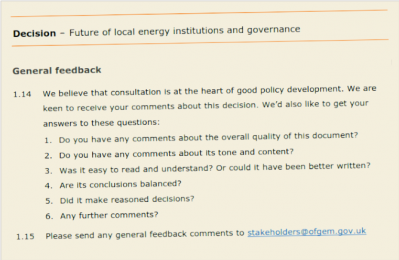Air Source Heat Pump Policies – MCS Planning Standards
You make some interesting points, many of which I can agree with and some of which Id like to understand better/resolve ambiguities in.
Posted by: @eltonIf LPAs canvassed as part of the report stated they are worried then they are worried. EH teams will be looking at the line from CIEH which is clear and CIEH have lobbied for the dB(A) limit to be lowered .. and proposals are for it to be (to 35dB(A)) in rural areas. This isn't just cuts & musings.
There appears to be lots of confusion and imprecise terminology in the industry here.
CIEH, in their professional note, currently advocate a fixed limit of 35dB(A) from the ASHP alone, to be varied upwards to as much as 40dB(A), if the circumstances dictate, but with up to 6dB penalty applied for tonality (or none if there are no significant tonal characteristics).
MCS is effectively 37dB(A) from the ASHP alone - because the 42dB(A) includes a notional background of 40dB(A). However there is no penalty for tonality
BS8233 as far as i can tell would translate to 45dB(A) (including background) because the desirable level for indoor sleeping quarters is 30dB(A) but the standard states that 15dB attenuation can be assumed between inside and outside with a window in vent position.
So actually there isn't that much difference between these other than the tonality issue (which I am coming to suspect is the one to tackle).
MCS in their recent consultation on MCS-020 suggest that the assumed background might be reduced to 35dB(A) in rural areas. Mechanically that would actually increase the allowed noise from the heat pump unless they also adjust the 42dB(A) target, which they don't mention in their consultation. The way its worded in the consultation is incomplete/muddle headed, is the thinking behind equally incomplete?
Posted by: @elton2. Plenty of cases
EH deal with these things all the time, oil burner flues etc etc and ASHPs, air con, but on shops/factories/schools (an example being the Reepham heat pumps) not so much domestic as the rollout (like you say) has not taken hold yet domestically.
As I mentioned exactly 1 in my LPA in the past three years, which was deemed not justified. So not that many yet!
The interesting thing for me is any which were enforced (as opposed to just investigated) and/or went to court. I have found a few cases related to industrial processes, but none related to domestic heating. Im interested to know how judges approach this one. If anyone can cite a case (oil, gas or ashp) it would be interesting to read.
Posted by: @elton5. Env v noise
Do it and industry will adapt. They'll repurpose or recycle the older ones, or they'll will be fitted where it won't cause nuisance and will accord with tighter rules. Larger homes etc. Its perfectly possible. Big time agree with tonality measure, as do the govt.
Industry will adapt if the market is big enough in relation to the adaption demanded, else they will exit the market. My strong suspicion is that the UK market isnt big enough so we need to collaborate with or follow our EU colleagues.
A simple tonality measure is probably the target to crack and seems to be a running theme throughout. Maybe its just this that we need to address? (plus a requirement to use antivibration mounts etc to minimise structure borne transmission in shared buildings).
Posted by: @elton... the sake of sustainability of rollout.
I agree here big time, because those who don't want ASHPs to be rolled out (ie the oil industry, the gas boiler industry and the right wing generally) use noise as a tool to scare people off. The more we can defeat that the better. But it needs intelligent, well thought through regulation and I'm far from convinced that our government has the capability or the interest, or the market clout.
I hope I'm proved wrong.
Posted by: @eltonMy understanding of Persephone's case is that its a complex mix of clumsy local authority action, possible vested interest, taking no account of tonality, and a cheapy & nasty pump and install (uh-oh, yes its a crappy back-of-warehouse Samsung with vicious tonality). It might cost just a few quid to provide an adequate fix. Surely that is within someone's grasp to enact/enforce?
I personally am reluctant to come to a conclusion on Persephone's case. Its certainly a 'cheap' heat pump, but installed about as far from the house as it could be (actually rather a long way by many standards and) quite well shielded, so, apart from the choice of pump, possibly a 'good' job (we dont know enough of the detail to be certain). To a layman the choice of pump is quite reasonable and Samsung are a well thought after brand generally (not specifically for heat pumps).
Persephone's description suggests that the issue is specific tonalities rather than the general noise level, which would chime with it being a relatively cheap model.
The evidence suggests, so far as I can tell, that the interior noise level would be well below both the planning condition and the level recommended by BS 8233, and so it may genuinely be impossible for the Local Authority to enforce within the legal powers that they have. Furthermore it appears that Persephone may have particularly acute hearing/sensitivity which may not be something that they can take into account (and certainly isn't something that the neighbour can be expected to take into account, not least because its not something that they can know).
I don't think that is a basis to conclude with any certainty that anyone involved is at fault. As they say sh1t happens and sometimes its due to an unfortunate combination of circumstances rather than actual fault. We just don't know!
My suspicion is that, as @mars suggests, the realistic (and perhaps equitable) solution is some additional sound deadening/absorbing inside the shed in which the ASHP is located. However that requires cooperation of a type that may now be difficult and, as I mention above, the Local Authority may not be in a position to enforce.
Finally all of this is speculation based on the limited information we have.
4kW peak of solar PV since 2011; EV and a 1930s house which has been partially renovated to improve its efficiency. 7kW Vaillant heat pump.
Posted by: @jamespaI don't think that is a basis to conclude with any certainty that anyone involved is at fault. As they say sh1t happens and sometimes its due to an unfortunate combination of circumstances rather than actual fault. We just don't know!
I believe it is absolutely my local council's fault because of the followings:
1- My neighbour had an application for demolishing their bungalow and building a two-storey in its place. One of the major justifications for the application was the use of an ASHP to be installed at their driveway (east side of their house- my house is to the west, so it had no impact on my house). There is no single spot in the dwelling for an ASHP that complies with MCS, ie the installation of the ASHP was not a PD.
2- The application was approved with a 'noise condition' because Environmental Health was concerned about the noise of ASHP. The condition was NR25 night/NR30 day. The neighbour that would be affected had a loft conversion. The ASHP that got the permission was a Samsung 2 propeller fan model. So, initially, I believe my local council should not have approved the planning permission because an ASHP at the driveway would have definitely raised noise issues for the property to their eat side.
3- My neighbour have a building company and a plant hire company that has contracts worth thousands of pounds with my local council. So, I believe they had the biased support of the council for the whole project.
4- According to my neighbour's architect/agent, in the middle of the project they decided to change the position of the ASHP. They did it without consulting the Council. So, it is a breach of planning permission that had a 'noise condition' attached.
5- In breach of the planning permission, they also constructed an outbuilding where they were supposed to plant a tree and put their wheelie bins. They then installed the ASHP to the outer wall of the outbuilding. So, we have 2 breaches: outbuilding + ASHP
6- When I raised the issue with my local council they just closed my case and stated that installation ASHPs is a permitted development and that my neighbour had every right to change the position of the ASHP.
7- I contacted 2 MPs, and the council re-opened the case. They said that they were not aware that the new place of the ASHP was non-compliant with MCS.
8- The initial assessment of Environmental Health approved NR39 which was clearly a breach of the noise condition.
9- My neighbour then built a thin layer of wall on my side of the ASHP (originally there was only a thick wall on their own side. Then they applied for a retrospective claiming that they did not know about the ASHP polices.
10- Environmental Health had 2 more rounds of noise measurement: For the first one they stated that most of the recordings were faulty and so they could not use them! For the second round they stated that they did not know how to use the recording device, so the recordings were of no use again! I strongly believe that EH did it on purpose, to side with my neighbour because there is no right of appeal for breaching a planning condition.
11- Please also note that my neighbour also insisted that the installer is MCS certified. The MCS certificate, however, is a fabricated document because the certificate is for an ASHP at the driveway, not at the new place (on the boundary of their house). The date of the certificate proves that it was issued after the installation.
12- For the retrospective, the applicant did not use the fabricated MCS certificate of the installer (Eco Coil Heating Ltd), but used a desktop MCS assessment provided by WSP.
13- I objected the retrospective and raised the issues of breach of planning permission, noise, visual impact policies, and setback zone policies. I also stated that the WSP assessment was false as the assessor had changed some of the MCS criteria (in the MCS table) just because he believed MCS policies were not precise. I also mentioned that even if the assessor believes MCS is not good, he is supposed to follow its polices for the assessment to considered MCS!
14- The council decided that construction of the outbuilding was not a breach, but a permitted development. Despite the fact that the outbuilding (shed + space for ASHP) is clearly one construction, the council justified the breach by claiming that the shed section is a permitted development and the space made for the ASHP is just a minor change to that permitted development. They also stated that ASHPs can be installed on the boundaries of houses in residential areas and that the ASHP is fine in terms of visual impact policies.
15- The application was rejected for the following reasons: "... the applicant has failed to submit ... appropriate information ... that the ASHP has been properly and correctly installed within the application site together with the submission of on-site noise assessments all in compliance with MSC Planning Standards and in conformity with condition 2 annexed to the Decision Notice dated 19th November 2019 in relation to Planning Permission 19/02448/FULL. .. the proposal is considered contrary to Scottish Government Planning Advice Note 1/2011 - Planning and Noise; Policies 1, 10 and 11 of the Adopted FIFEplan 2017; and the Low Carbon Fife Supplementary Planning Guidance (adopted 2019) and is recommended for refusal".
16- My neighbour made an appeal.
17- The LRB advisor paid nearly £2000 of the council's money to Atkins to review WSP's MCS calculation. Atkins approved its accuracy.
18- In my objection letter for the appeal I stated that (a) both the WSP MCS assessment and the Atkins review were desktop assessments and (b) were not based on MCS criteria.
19- The LRB Advisor then decided that MCS is of no relevance to the case. He also decided to use NPF4 instead of FIFEplan 2017: "As presented previously, the LRB Planning Adviser is aware that National Planning Framework 4 (NPF4) was adopted by the Scottish Government on Monday 13th February, after the abovementioned LRB Notice of Review was submitted to Fife Council. NPF4 now forms part of the Development Plan for Fife alongside the FIFEPlan Local Development Plan 2017 (FIFEPlan)".
20- The LRB approved the application with a new condition the wording of which was prepared by the Head of Planning Services. My neighbour paid WSP £2500 for a couple of hours of noise assessment. WSP provided the document, and the application was approved.
21- I strongly believe the condition is biased, and has only been designed for the approval of the ASHP in any way possible:
The Final result of the assessment (NR inside my bedroom) is a prediction which is based on another prediction (sound level 1 meter from the façade of the first floor window of my house) which is based on a noise measurement (at-source measurement adjacent to the ASHP).
22- I do not believe I can prove nuisance because "Ultimately though it’s your decision [the officer] that matters not what the sound level meter says".
I sympathise with your position but ... have you considered the possibility that nobody is at fault. Just because somebody has been harmed it doesn't mean that someone else (or indeed anyone) is necessarily at fault.
Your local Council is bound to act in accordance with the law, so far I don't think that you have provided any evidence that they have done anything other than do exactly that.
We all seek to blame others for our problems, and often we are right. Sometimes however, we aren't, and the plain fact of the matter is that in some cases is that nobody is to blame.
Please consider that possibility. I'm not saying its the case, but you should at least consider it. At worst it might lead you to some internal peace, at best it might even lead you to a solution, eg as @mars has suggested, working with your neighbour to mitigate the remaining noise (which doesn't look impossible given the photo). That's never going to happen if they feel you blame them.
As I say I sympathise with your position, but seeking to blame others is often the quickest way to cede control to others.
4kW peak of solar PV since 2011; EV and a 1930s house which has been partially renovated to improve its efficiency. 7kW Vaillant heat pump.
@persephone - this is an awful mess isn't it?
May I add two points:
a: We are migrating to a new strategy for energy within GB. Government is effectively devolving energy matters to a new Independent System Operator & Planner (ISOP) which is described in the Ofgem Decision Notice"Future of Energy Institutions and Governance".
ISOPs remit is to actually attain Net Zero by 2050, rather than make policies and hold meetings!
It is busy recruiting staff from an engineering background, especially those being made redundant from National Grid ESO.
Everything is on the table, and that includes the regulatory systems created by MCS.
There are to be Regional Energy Strategic Planning bodies (RESPs) inaugurated next year (2025). It is those RESPs who are to provide the democratic accountability to ISOP.
It's quite possible that RESPs could take over energy matters which are presently being handled by LPAs.
Councillors on Planning Committees don't have anywhere near enough expertise to assess planning applications and complaints on energy-based products and sites.
Nor can most councils afford to retain staff who can properly address problems and use test equipment effectively
Noise issues (and other installation mistakes) are clearly holding back deployment of heat-pumps.
If ISOP is to oversee a rapid increase in Zero-Carbon domestic heating, then they'll be eager to remove the reasons which prevent widespread heat pump uptake.
We don't yet know what a RESP might look like, its composition or its budget.
But each of the 14 RESPs will need to attract a similar level of expertise and experience which is evident on this Forum.
As many of us who can do so should be preparing ourselves to get involved with the formation of a RESP in our area.
b: Legal action is very expensive, and can often result in sub-optimal conclusions based on fine points of legal opinion.
If I'm faced with a problem which could be resolved by two different approaches, and one of those commences with "obtain legal advice", then I'm strongly inclined to go with the alternative!
I've recently installed new network hardware. Resilience and data security are important, which means almost all connections are wired, rather than using WiFi. So the new hardware includes a rack-mounted (fast) switch/hub, powered by the existing in-house storage battery at a nominal 52v DC.
This wired switch has an integral cooling fan which operated at full speed regardless of the temperature of its internal components.
Maybe the noise level would be acceptable within a commercial server-room, but I wasn't prepared to have that in the Development workshop.
So I did the necessary online research and bought a low-noise cooling fan.
It's exactly the same size and can carry the same volume of air.
But, crucially, the material from which the blades are formed and the sweep of their varying pitch makes it so quiet that I can't tell if it's running simply by listening.
I added a temperature-controlled PWM (variable speed) control module for good measure whilst I had the equipment in pieces!
Now let's turn our attention back to the issue of ASHP noise.
It's quite likely that manufacturers are only concerned with using fans, heat-exchange vanes and protection grills which just satisfy the present UK regulations.
It might well be the case that a replacement fan could be designed which made considerably less noise.
And I'll conjecture it would cost a lot less to achieve that fan-blade technology than we would throw at solicitors and barristers to litigate problems such as you've described.
It's that sort of 'engineering-based' approach which ISOP should be able to implement.
Funding two PhD students to investigate the issue might be all that's required.
The resulting fans themselves can be relatively cheap to manufacture.
And, if that's so, then there's a ready-market opportunity with all ASHP manufacturers across the globe.
It's these design-based technology developments with which the UK should be leading the way towards Net Zero.
Save energy... recycle electrons!
Posted by: @transparentIt's these design-based technology developments with which the UK should be leading the way towards Net Zero.
I couldn't agree more with that, and this applies the system design (particularly for retrofit) and installation as well as the units themselves. Currently we spend a lot of money throwing out perfectly serviceable components of our central heating systems so that the installers can have an easy job where, in many cases, there are engineering solutions.
I have my usual cynicism though, will a new 'system' really change things. Only if it has the resources and backing to think about the problems better than the current is the answer, and to change things having done so.
Personally I would love to contribute and would probably be prepared to do so for expenses only. But I doubt anyone will want a former engineer with a physics degree and good DiY skills, who has also spent fourteen years in local government (involved amongst other things, in creating planning policy), on the grounds that I don't have any relevant experience and am not connected to the industry.
4kW peak of solar PV since 2011; EV and a 1930s house which has been partially renovated to improve its efficiency. 7kW Vaillant heat pump.
Posted by: @jamespaI doubt anyone will want a former engineer with a physics degree and good DiY skills, who has also spent fourteen years in local government (involved amongst other things, in creating planning policy), on the grounds that I don't have any relevant experience and am not connected to the industry.
I disagree. 🙂
All the DNO and Transmission agreements which I've read contain requirements for those companies to work with the general public.
DNOs are now required to operate as Distribution System Operators (DSOs), by which they must take into account all the small local generation & demand issues which have grid connections.
The days of them only being accountable for electricity supply from major licensed generators are over.
My own DNO (NGED) has clauses in its RIIO-ED2 Agreement with Ofgem which stipulate that they are to have four engineers available to assist in the formation of Community Energy groups.
That Future of Local Energy Institutions and Governance decision document includes a request in Section 1.15 that we provide feedback.
Read through the document and you'll see that it's discussing how RESPs might operate and work with the new ISOP:
I'm in contact with numbers of Councillors from different levels of local government, and they appear to be oblivious of the move by central government to devolve energy strategy away from Westminster. They don't know of the provisions in the Energy Act (2023), and their Councils are not pursuing involvement in the formation of RESPs because they do not (currently) have any remit for energy(!).
That leaves the field wide open for others, like ourselves, to put forward what we think should happen.
If we propose structures and expertise which can achieve Net Zero by 2050, then the door is wide open.
In the absence of other alternatives, what we request/suggest will form the majority of the feedback from which DESNZ and Ofgem must build on for the future.
I've submitted a number of 'proposal' documents to Ofgem, NGET and NG-ESO.
Amongst these I've produced the following diagram as a picture of what a RESP might 'look like':
This Forum is full of people with skills, experience and knowledge to attain Net Zero.
We should be right at the heart of what ISOP and the RESPs end up looking like.
Save energy... recycle electrons!
Posted by: @eltonLooks like the PD consultation is out, including some HP elements:
Changes to various permitted development rights: consultation - GOV.UK (www.gov.uk)
I've responded to this consultation. In particular Q 51 invites a free-form response on heat pump installation (albeit being quite vague about which aspect of this permitted development right is being referenced). I've used this to request planning permission is not tied to using an MCS installer.
Q.51 Do you have any views on the other existing limitations which apply to this permitted development right that could be amended to further support the deployment of air source heat pumps?
- Yes
- No
- Don’t know
Please provide your reasons.
Posted by: @chickenbigPosted by: @eltonLooks like the PD consultation is out, including some HP elements:
Changes to various permitted development rights: consultation - GOV.UK (www.gov.uk)
I've responded to this consultation. In particular Q 51 invites a free-form response on heat pump installation (albeit being quite vague about which aspect of this permitted development right is being referenced). I've used this to request planning permission is not tied to using an MCS installer.
Q.51 Do you have any views on the other existing limitations which apply to this permitted development right that could be amended to further support the deployment of air source heat pumps?
- Yes
- No
- Don’t know
Please provide your reasons.
I did similar, plus a couple of other points. I also sent them an email with the same matters (reproduced below).
I doubt that they will do anything this time around but maybe next time, although MCS will doubtless continue to campaign to protect their monopoly, citing 'installation quality' and 'customer assurance' as the justification.
"The current restriction that means that PD rights only apply when the installation is undertaken by an MCS contractor, to MCS installation standards, should be removed. This is built into into the 'MCS Planning Standards' which are referenced in Schedule 2, Clause G1 of the GDPO 2015 (there is provision also for 'alternative equivalent standards', but there is no alternative). The requirement, which has the effect of specifying internal technical details of the installation and design, mandating contractural details, and restricting installations to a small subset of the available workforce (specifically excluding most plumbers and electricians) does not, other than in relation to noise, relate in any way to the effect on others, and creates a closed shop.
4kW peak of solar PV since 2011; EV and a 1930s house which has been partially renovated to improve its efficiency. 7kW Vaillant heat pump.
- 26 Forums
- 2,364 Topics
- 53.6 K Posts
- 147 Online
- 6,029 Members
Join Us!
Worth Watching
Latest Posts
-
-
RE: Octopus Cosy Heat Pump Owners & Discussion Thread
@kevh it's worth remembering that many lsvs only actual...
By JamesPa , 5 hours ago
-

@majordennisbloodnok Education, Education, Education…
By Toodles , 8 hours ago
-

RE: Setback savings - fact or fiction?
Exactly. We only need to compare conditions, to decide ...
By cathodeRay , 11 hours ago
-
RE: Balancing financial efficiency and comfort using the Octopus Cosy tariff
I found because I have very low heat loss I can set bac...
By RadWhisperer , 14 hours ago
-
RE: Need Help Optimising My Rushed ECO4 Install: 12kW Bosch Heat Pump
Welcome @mickamills We too have an oversized 12kW Sa...
By Old_Scientist , 20 hours ago
-
RE: My Powerwall 3 Consumes 3-4 kWh/Day in Self-Consumption: Is This Normal?
@caron I can confirm that the power usage of the PW3 is...
By Old_Scientist , 20 hours ago
-
RE: Speedcomfort radiator fans
Thats true, but having tried (and succeeded) in constru...
By JamesPa , 24 hours ago
-
RE: Solis S6-EH1P8K-L-PLUS – Why I Chose It and What I’ve Learned So Far
@bash brilliant, thanks for the feedback
By energy9165 , 1 day ago
-

RE: Heat Pump Heats the House… But It’s Not Cosy. Emitter Changes or System Tweak?
@alastair There I was, feeling grumpy, he said “Cheer u...
By Toodles , 1 day ago
-
RE: Grant Aerona: Is there a setting to keep the 2-port valve open during pump blockade
Depends on OAT. Mine cycles at OAT>10 and of course...
By JamesPa , 1 day ago
-
RE: New Fogstar 15.5kWh upright solution
@transparent My conclusion is as you have noted, tha...
By Bash , 1 day ago
-
RE: Mitsubishi Ecodan R290 10kW performance
And to you too. Wishing you a very enjoyable festive s...
By Sheriff Fatman , 1 day ago
-

RE: External pipework insulation
They do? But that isn't apparent from the photos we'r...
By Transparent , 1 day ago
-

RE: Say hello and introduce yourself
@velcro welcome to the forums. Please feel free start a...
By Mars , 2 days ago
-
Daikin EDLA11D3V3 DHW Settings
I have a newly installed EDLA11D3V3 which I'm still get...
By Velcro , 2 days ago
-
RE: Midea ASHP – how to set weather compensation
@curlykatie did you get sorted with this?
By MickaMills , 2 days ago
-
RE: MyVaillant Connect Regular Disconnect
Thanks. Yes, if the time is consistently 11pm every nig...
By buckwem , 3 days ago






